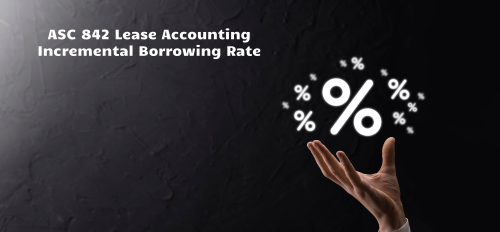How to Calculate IBR for ASC 842 Compliance

The Incremental Borrowing Rate (IBR) is a critical component of ASC 842 lease accounting compliance. This guide provides a step-by-step approach to calculating the IBR for a lease, including the data values required and considerations for accurate calculations.
Step 1: Gather Required Data
To calculate the IBR, you need the following data values:
- Lease Term: Start date and end date of the lease.
- Payment Schedule: Frequency (monthly, quarterly, annually) and amount of lease payments.
- Lease Type: Whether the lease is collateralized or non-collateralized.
- Lessee’s Credit Rating: Public companies can use published credit ratings; private companies may use proxy ratings or benchmarks.
- Market Interest Rates: Current market rates for similar borrowing terms (e.g., U.S. Treasury yields).
- Collateral Adjustment: The impact of collateralization on borrowing rates.
- Risk-Free Rate: A baseline rate for borrowing, such as a U.S. Treasury yield.
Step 2: Understand the Lease Terms
Identify the lease-specific details, including:
- The duration of the lease.
- The payment amounts and their frequency.
- Whether the lease involves collateral.
This data is foundational to determining the appropriate adjustments and calculation steps.
Step 3: Assess the Lessee’s Creditworthiness
Evaluate the lessee’s credit risk to determine an appropriate risk premium. Public companies can reference credit ratings from agencies such as:
Private companies can use industry benchmarks or proxy ratings to estimate their credit risk.
Step 4: Identify Market Interest Rates
Research the current market rates for borrowing terms similar to the lease. Start with risk-free rates, such as the U.S. Treasury Yield Curve, and adjust for the lease’s credit risk and terms.
Step 5: Adjust for Collateral and Lease-Specific Factors
Adjust the borrowing rate based on:
- Collateral: Reduce the rate if the lease is collateralized to reflect the lower risk to the lender.
- Lease Term: Adjust for the length of the lease, as longer terms typically involve higher rates.
- Payment Frequency: Frequent payments may reduce the effective borrowing rate.
Step 6: Perform the Calculation
Combine all inputs to calculate the IBR:
IBR = Base Market Rate + Credit Risk Premium + Collateral Adjustment
Example Calculation:
- Base Market Rate (e.g., U.S. Treasury yield): 3.5%
- Credit Risk Premium: 2.0%
- Collateral Adjustment: -0.5%
- Resulting IBR = 3.5% + 2.0% - 0.5% = 5.0%
Step 7: Document and Validate
Maintain thorough documentation of:
- The methodology and assumptions used.
- All data sources and calculations.
Validate the results to ensure compliance with ASC 842 guidelines.
Step 8: Leverage Technology
Consider using tools like iLeasePro to simplify the IBR calculation process. Such tools integrate market data, automate calculations, and provide audit-ready documentation.
By following this step-by-step guide, you can calculate an accurate Incremental Borrowing Rate (IBR) for your lease. Proper calculations ensure compliance with ASC 842 and accurate financial reporting. For a streamlined process, explore lease accounting solutions like iLeasePro.



